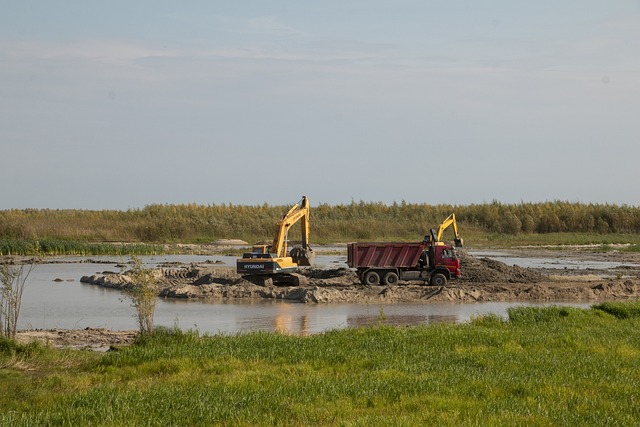Solo operators (independent truckers) face a significant challenge in securing affordable policies due to their high-risk profiles and lack of standardization. Despite diverse risk factors, they struggle to find tailored insurance that balances protection with cost-effectiveness. The article advocates for innovative solutions, leveraging technology like telematics and GPS tracking to assess risk accurately. By using data analytics, insurers can offer personalized pricing models based on safe driving habits, enhancing accessibility to affordable policies for independent truckers while fostering responsible driving culture. Collaborative efforts are essential to break down barriers and create an inclusive insurance ecosystem.
In the dynamic landscape of trucking, solo operators face unique challenges in securing affordable insurance policies that meet their specific needs. With increasing operational risks and fluctuating market conditions, these independent truckers require accessible and cost-effective coverage options. This article delves into the intricate issues surrounding affordable policies for solo operators, exploring current trends, identifying barriers, and proposing strategies to enhance their insurance experience. By understanding these challenges, we aim to illuminate potential solutions that could revolutionize access to insurance for this vital segment of the trucking industry.
Understanding the Unique Challenges Faced by Solo Operators

Solo operators, often referred to as independent truckers, navigate a unique set of challenges in the logistics industry. One of their primary concerns is accessing affordable policies that cater to their specific needs. Unlike larger fleets with dedicated resources, independent operators typically manage everything from maintenance to insurance, making cost-effectiveness crucial. They face higher risks due to varying workloads, diverse routes, and unpredictable market conditions, all of which impact their insurance premiums.
These challenges are exacerbated by a lack of standardization in the industry. Each solo operator has distinct risk profiles, making it difficult for insurers to offer tailored affordable policies. As a result, many independent truckers struggle to find comprehensive coverage that balances protection with affordability. This situation demands innovative solutions and specialized insurance products designed to meet the unique and diverse needs of this segment of the trucking community.
The Current State of Insurance Policies for Independent Truckers

The current insurance landscape for independent truckers presents a complex web of challenges, particularly when it comes to securing affordable policies. Many solo operators struggle to find comprehensive coverage that aligns with their unique needs and financial constraints. Traditional insurance providers often offer rates that are prohibitive for these small business owners, leaving them vulnerable to the high costs associated with unexpected events like accidents or vehicle damage. This disparity is further exacerbated by the lack of personalized options tailored specifically to the low-volume, independent nature of their operations.
As a result, many truckers find themselves opting for minimal coverage or even foregoing insurance altogether, which increases risks for both the individual and the industry as a whole. The absence of adequate insurance protection can lead to financial instability for solo operators, impacting their ability to sustain their business in an already competitive market. Thus, there is a pressing need for innovative solutions that make affordable policies more accessible to independent truckers, ensuring they can navigate the road ahead with confidence and security.
Strategies to Secure Affordable Coverage Options

Many solo operators, especially independent truckers, face a significant challenge in securing affordable coverage options that meet their unique needs. To overcome this hurdle, they should consider several strategies. One effective approach is to compare rates from multiple insurance providers. By shopping around, operators can identify policies that offer comprehensive protection at competitive prices. Additionally, leveraging online platforms designed for commercial vehicle insurance can streamline the comparison process, saving time and effort.
Another strategy is to explore niche insurers specializing in catering to solo operators and independent truckers. These carriers often have specialized knowledge and can provide tailored solutions that balance coverage with cost-effectiveness. Furthermore, participating in industry associations or groups dedicated to advocating for independent truckers may grant access to exclusive insurance programs or collective bargaining power, ultimately leading to more affordable policy options.
Potential Solutions and Future Outlook for Accessible Insurance

Many potential solutions are on the horizon to make insurance more accessible for solo operators, particularly independent truckers who face unique challenges in securing affordable policies. One promising approach involves the utilization of technology and data analytics. Insurers can leverage telematics, GPS tracking, and driver behavior monitoring to assess risk more accurately. This enables personalized pricing models that reward safe driving habits rather than relying solely on demographic factors or historical claims.
The future outlook for accessible insurance suggests a shift towards customizable and dynamic policies. By integrating real-time data, insurers can offer flexible coverage options tailored to individual operators’ needs and risks. This not only benefits independent truckers by providing cost-effective solutions but also fosters a culture of responsible driving. As the industry evolves, collaborative efforts between insurers, technology providers, and regulatory bodies will be crucial in breaking down barriers and ensuring a more inclusive and secure insurance ecosystem for solo operators.
In addressing the challenges of securing affordable policies for solo operators, particularly independent truckers, it’s clear that a multi-faceted approach is needed. By understanding their unique circumstances and implementing targeted strategies, we can create a more accessible insurance landscape. This includes encouraging competition among providers, promoting transparency in pricing, and leveraging technology for efficient risk assessment. Ultimately, ensuring affordable coverage options for these essential workers not only supports their livelihoods but also strengthens the overall stability of the transportation industry.
